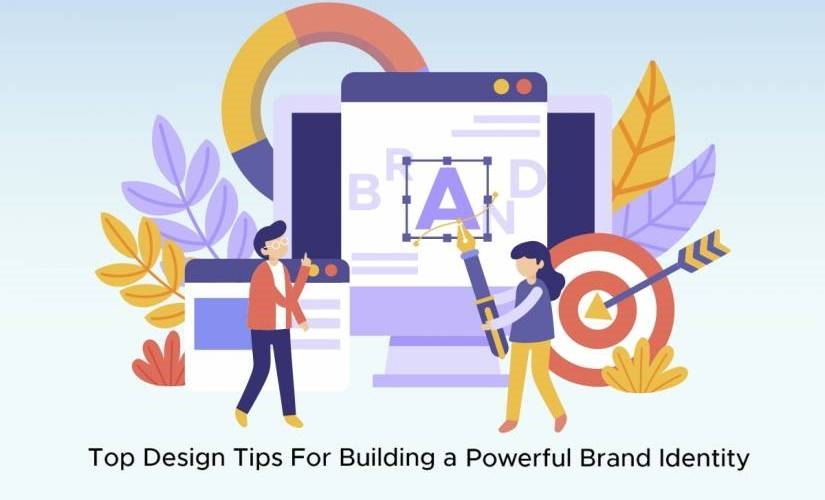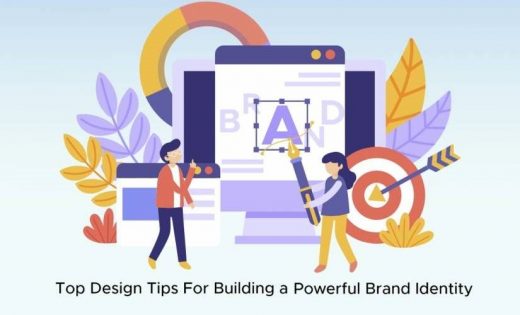Build Your Brand Identity with the Help of 8 Web Design Tips
Build Your Brand Identity with the Help of 8 Web Design Tips

Do you own a website? Within seconds when the visitors land on your website, can they gauge what business you have? Does your website have a user-friendly interface? Do you have the pricing of the product or service listed clearly? What is the bounce rate of your website? A lot of factors are considered while measuring the success of your website.
If you answered any of the above questions as “no,” it’s time for you to rethink how you have optimized and designed your website. If you want your website to excel in the internet world, you need to feed your website’s user experience and functionality to complement your content.
A website with good design will easily attract new visitors, convert them into leads, and deliver results beyond expectations. Additionally, staying updated on web design trends will help you stand out and remain competitive. You, by now, know that good website design is critical for brand building, and if you have been looking for website design tips, you are at the right place.
Whether you want to build a website for a multi-million dollar brand or a personal blog, branding is critical. However, almost 57% of internet users agree that they will not recommend a poorly designed website. So let us see how you can make your website stand out and make it memorable with the help of a few web design tips.
1. Colors:
The choice of color palette plays an integral role in branding. Picking colors for your brand is not only about aesthetics, but it stimulates emotions and carries with the subconscious association’s numerous characteristics and things. Therefore, before choosing a color, you need to consider its effect and associations on the human mind. This way, you will know whether it’s the right fit for your brand or not.
Keep in mind that different cultures may relate the same colors to specific things. Before finalizing anything, check what the colors meant to you and the market your business is operating in. Ensure an attractive website design for your brand, as 38% of people stop engaging with a website if they find it unattractive.
2. Fonts:
The typeface is another way of building the identity of your brand. What type of font would be appropriate for your message? Bigger, chunky fonts or lighter, cleaner fonts? Why? A particular font portrays feelings for the mood, even when no one understands. Features like font-weight, serifs, X-height, font width, rounding, and several others are proven to work together to make small yet noticeable differences.
An elaborated font in script style will make your text look detailed and elegant. On the contrary, the condensed, heavy font on the website will make the message seem urgent and hard-hitting. Of course, such minute details of the fonts may get complex at times, but it is always a good idea to work with a font family for your online assets, including the website.
3. Consistency:
To make your brand successful, you will have to make your website memorable. What can you do so that people remember things from your website? Simply repeat them. Choose consistency throughout your web design. It will help you establish the picks you have made to demonstrate your brand’s personality and evoke appropriate emotions.
Maintain consistency in colors, typography, and visuals throughout your website to ensure that your website establishes a uniform image.
4. Functionality:
What kind of functionality would prove appropriate for your website? Should it be easy to use and traditional? Or should you integrate interactive elements in it to engage your users more? The functions of your website will communicate with your users about whether your business is established and classic or exciting and innovative. Most websites generally have the top menu and dropdowns to help users navigate throughout the website and toggle between pages.
However, if you choose to change the navigation system for your website, use navigations, and succeed in uprooting expectations, your business, brand. As a result, the website will then stand out. The trick here is to consider the message that you want to convey. Then, focus on establishing great functionality for your website that fits your target audience well.
5. Mobile Optimization:
Responsive design is the newer, evolving form of development that offers flexibility to your website, irrespective of its operating device. A mobile-friendly website is not only good for SEO, but it will also load on all devices adequately. Also, 85% of adults say that a website should perform the same on mobile, as it does on desktop. You don’t know which device your users will use to visit your website, and therefore, to make it fully functional, you need to make your website mobile-friendly.
With the growing number of smartphone users, you need to think more about how your website performs on mobile devices every day.
6. Voice:
Though visual and functional elements are critical for your website, you should also consider the information and text you want to convey. No matter how perfect the visual aspects of your website are, if the brand voice doesn’t match, your brand will detract from the website completely. You should consider the overall tone, mood, and message that you want to convey. You can orient the voice of your brand in the following way.
Literal vs. Metaphorical
A literal tone will help you explain what exactly something is. On the contrary, metaphorical tone makes use of comparisons and images to explain something. A literal tone is ineffective in creating a mood and is also less emotional, whereas a metaphorical tone can. That said, though the metaphorical tone is professional, it is more innovative and illustrative than the literal tone.
7. Personality
Your brand’s voice is concerned more about what you are saying, whereas the personality of your brand is about how you say it. Using different sets of words, you can convey the same message in dramatically different ways. The style, brand image, and voice may all match, but your brand’s overall personality will tilt or skew the brand, if not correct. If looking to hone the personality of your brand, you can choose to consider the following aspect.
Respectful vs. Irreverent
If your brand has a respectful tone, it is portrayed as positive, welcoming, and friendly. Such a brand will never use a statement or language that can offend or turn the potential customers off. The brand will also not put down the counterparts or contrary approaches to their business. On the contrary, when a brand has an irreverent tone, it shrinks traditions, conventions, or expectations. They may use slang, sarcasm, or sharp humor when connecting to their target audience and say they are like-minded. Irreverent tone can be impactful and tricky as it will quickly become offensive.
8. Value Proposition:
When a visitor lands on your website for the first time, it just takes them 50 milliseconds to form the orientation of your website themselves. Is this the correct website I have landed on? Is it looking attractive and interesting? What does all this business offer? Naturally, the visitor will have such questions in mind. Hence, your website should be competent enough to answer all such questions and provide a concise and clear value proposition to your visitors.
The value proposition of your website can be a short statement at a prime location on your website. However, it is preferred that you place this statement beside the logo of your website. This way, when new visitors will read the title of your business or website, they will also see the value proposition.
In just a few words, try to explain your website’s benefits to the consumers and visitors to know what your website is about and the offerings.
Putting all the above elements together, shared as website design tips, may still not give you a website that works best. Think, if your website looks exactly the same as that of your competitor, will it stand out? Will people remember it? How do they distinguish your brand? If your website resembles another website, your users will have a bad experience. Also, know that almost 88% of users don’t return to a website after having a bad experience.
Final Words
A strong brand image is crucial for bigger corporations and is equally essential for smaller enterprises and personal blogs and websites. Correct branding will help your brand differentiate from one another, and your prospects can also quickly judge the level of quality offered.
The web is an excellent platform nowadays to build your brand. Hence it is crucial not to ignore branding when you work on your website. Ensure that you utilize all possible techniques to make it effective and powerful. Follow web design trends to represent your brand in the digital world and ensure the growth of your business. With amazing web design coupled with high-quality products and services, you can improve your brand value.
Image Credit: Provided by the author; Thank you!
The post Build Your Brand Identity with the Help of 8 Web Design Tips appeared first on ReadWrite.
(25)


